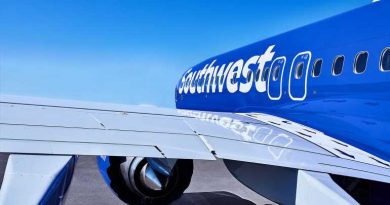IATA shifts away from NDC certification process
IATA is doing away with its current NDC certification process and replacing it with a new multilayered program called the Airline Retailing Maturity (ARM) index.
IATA’s OneOrder registry will also be folded into the new ARM index registry.
Under IATA’s 6-year-old NDC certification process, airlines, sellers and system processers have been certified on a five-point scale that includes levels 1 through 4 certification and the top level of NDC @Scale certification.
The ARM index registry still details the IATA-verified NDC capabilities of each company, but without using those certification levels. Instead, explained Kitty Little, IATA’s distribution, certification and compliance manager, the registry uses more straightforward business terms to explain a company’s NDC capabilities. For example, instead of using the terminology, “air stop, request and response,” the ARM Index registry uses the lingo, “shop for flights” and “shop for ancillaries” to describe a company’s capabilities related to flight or ancillary shopping.
“It’s not new development, it’s just a new lens on the development that is there,” Little said of the ARM index registry.
Thus far, 25 companies have made the transition into the ARM index, including Amadeus, Accelya, United, American, British Airways and several other global airlines. Migrations will continue over the next 11 months before IATA shuts down its NDC registry at the end of October.
The new registry is just the first pillar of the broader, three-pillar ARM index, which IATA hopes will spur companies to capture more of the potential that is afforded by NDC-supported modern retailing.
Airline industry has a lot to gain
A 2019 study undertaken by the consultancy McKinsey & Co. in partnership with IATA found that the airline industry could realize as much as $40 billion in new revenues annually by 2030 through transitioning to modern retailing.
One element of modern retailing is the attainment by airlines and other airline product merchandisers, including online and traditional travel agencies, of more uniform capabilities to sell ancillary and bundled products. Another is continuous pricing, in which airlines offer a wider variety of price points than the 26 fare buckets that they have access to at a given time under legacy merchandising technology. Still another is personalized offer creation, in which fare bundles are personalized in real time to airline shoppers.
While the ARM registry is public, the other two pillars of the ARM index will be private. The second pillar, which IATA is labeling Partnerships Deployment, is intended to give airlines and sellers insights into how well they are doing in scaling their NDC-enabled capabilities.
Under this pillar, carriers and their distribution partners provide IATA with information on the extent of their partnerships, including what types of offers are live in various partnerships and at what level of availability. Using that information, IATA produces a maturity report, showing companies how their deployments compare to peer groups in the industry.
The third ARM index pillar, which IATA labels its Value Capture Compass, is only for airlines. Its purpose, said IATA distribution director Yanik Hoyles, is to help airlines understand how they are doing relative to peers in implementing modern retailing strategies and solutions, including bundling products and content, pricing and revenue management, customer engagement and payments, among other items.
The maturity report will show airlines whether they are underperforming, on par with or overperforming similar types of airlines in those various categories.
Hoyles said that once airlines are armed with that information, they’ll be better poised to realize more of the potential offered by NDC-enabled retailing.
“It helps the airlines point to areas where they can deliver even more value,” he said.
Source: Read Full Article



